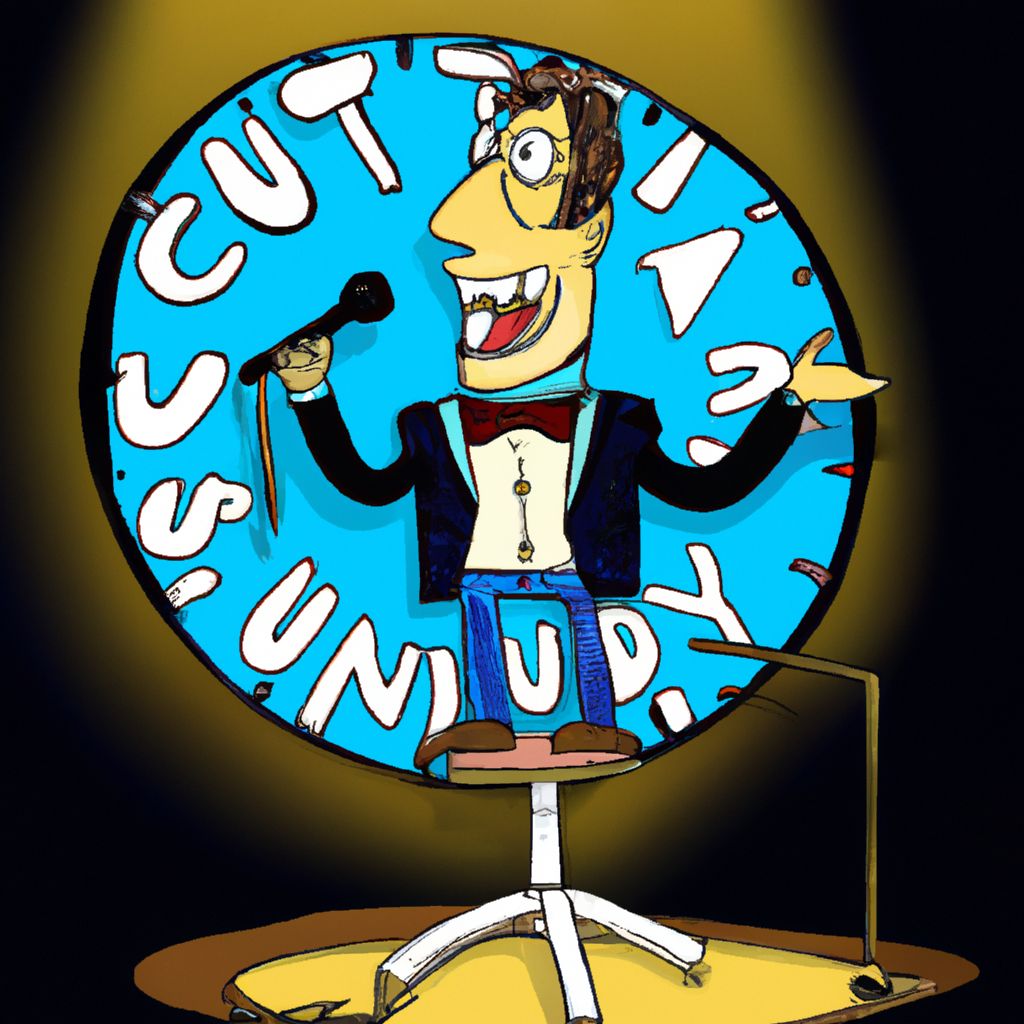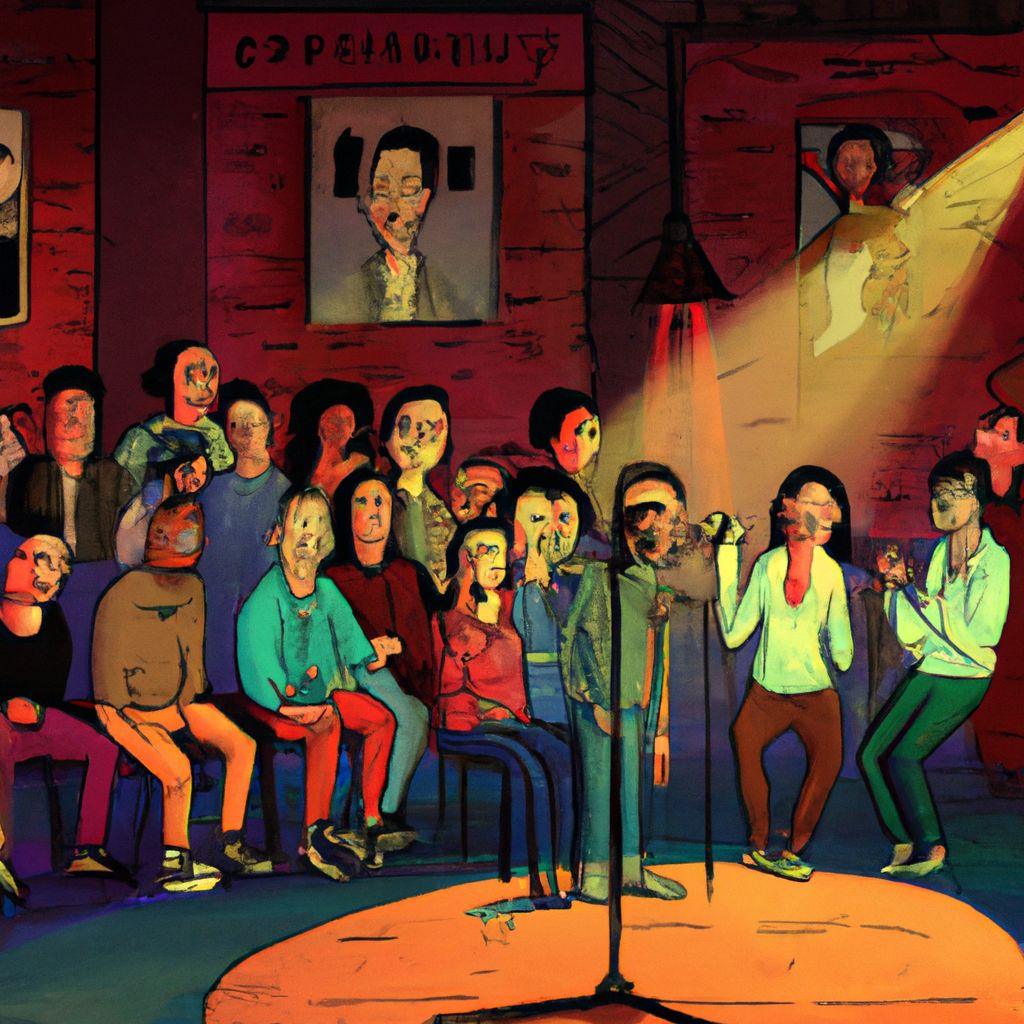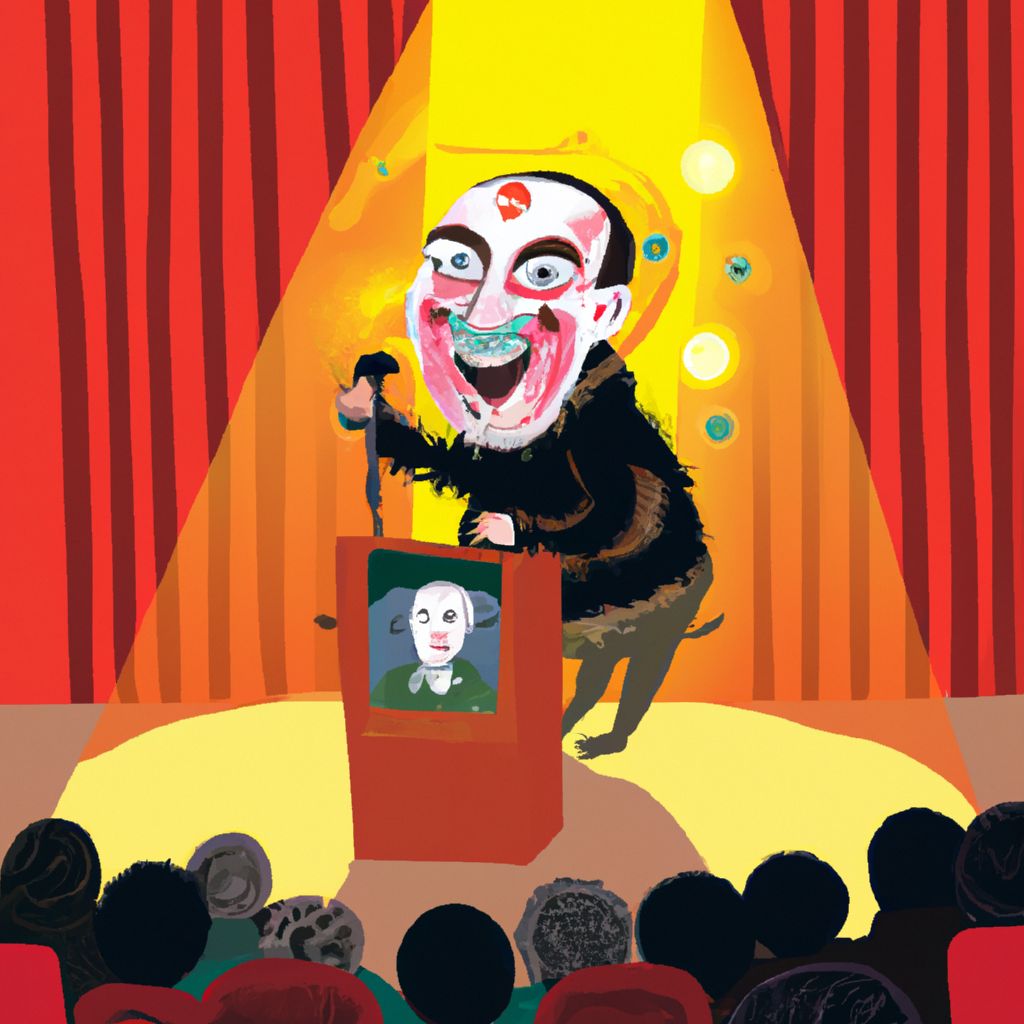- Introduction to Standup Comedy
- History of Standup Comedy
- Fundamentals of Standup Comedy
- Styles of Standup Comedy
- Writing Techniques for Standup Comedy
- Performing Standup Comedy
- Analyzing Great Standup Performances
- The Business of Standup Comedy
- Navigating the Current Standup Comedy Scene
- Conclusion: The Continuous Evolution of Standup Comedy
Introduction to Standup Comedy
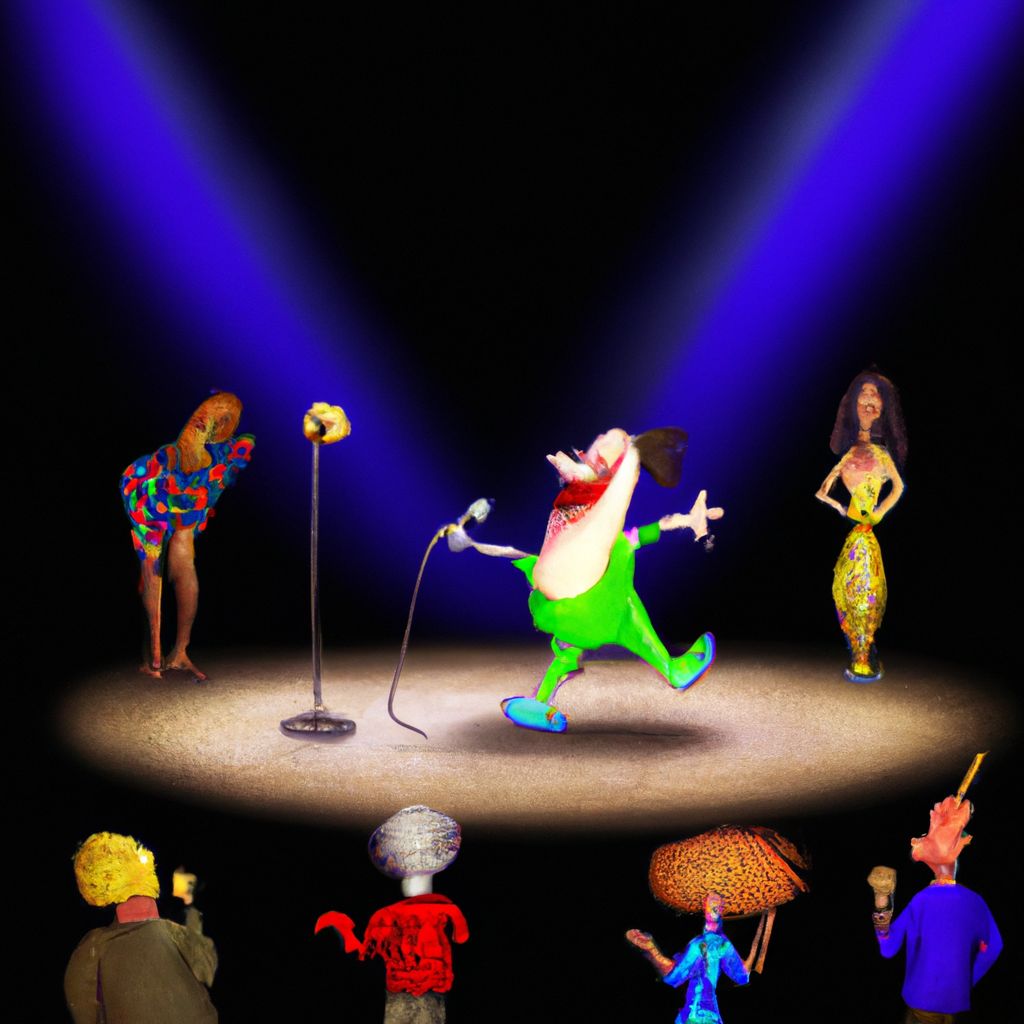
Standup comedy, a unique and dynamic art form, has carved its niche in the entertainment industry as a powerful medium for storytelling, satire, and social commentary. At its core, standup comedy involves a performer—commonly known as a comedian—delivering a humorous monologue directly to a live audience. The essence of this performance lies in its raw and unfiltered nature, often characterized by the comedian's ability to weave personal anecdotes, cultural observations, and societal critiques into a seamless, laugh-inducing experience.
The significance of standup comedy extends beyond mere entertainment; it acts as a cultural barometer, reflecting the complexities, absurdities, and the shared human experience of the time. Aspiring comedians and enthusiasts recognize that mastering the art of standup is not just about delivering jokes but understanding the intricacies of timing, delivery, and audience engagement. This understanding is crucial for anyone looking to make an impact in the world of comedy.
In this exploration, we will delve into the myriad techniques and styles that define standup comedy. From the classic setup-punchline structure to the use of storytelling, misdirection, and even musical elements, we will dissect the components that make standup comedy a multifaceted and evolving art form. Whether you are an aspiring comedian honing your craft or simply an aficionado seeking to deepen your appreciation, this journey into the heart of standup comedy promises to enlighten and entertain.
History of Standup Comedy

Standup comedy, as we know it today, has evolved through a rich and varied history. Its roots can be traced back to the comedic monologues of vaudeville and music hall entertainers in the late 19th and early 20th centuries. These performers set the stage for what would later become a standalone form of entertainment—standup comedy.
In the United States, standup began to gain prominence in the 1920s and 1930s with the rise of burlesque and variety shows. Comedians like Bob Hope and Jack Benny were pivotal during this era, transitioning from radio to television, and setting the tone for a style of comedy that was both personal and universal. The post-war period saw the emergence of nightclubs as the new venue for standup, with artists such as Lenny Bruce and Mort Sahl using the platform to push boundaries and introduce social commentary into their routines.
The 1960s and 1970s ushered in a golden age of standup with comedians like Richard Pryor and George Carlin, who revolutionized the art form with their candid and often provocative material, reflecting the tumultuous social changes of the time. This period also saw the emergence of comedy clubs as incubators for talent and innovation in the craft of standup.
As standup comedy entered the 1980s and 1990s, the proliferation of cable television and comedy specials brought standup to a broader audience. Comedians like Eddie Murphy and Joan Rivers became household names, expanding the art form's reach and influence. This era also saw the diversification of standup styles, with alternative comedy and observational humor gaining popularity.
Today, standup comedy continues to evolve, shaped by a more connected and global society. The internet and streaming services have democratized access to the art form, allowing a new generation of comedians to share their perspectives and connect with audiences worldwide. Cultural contexts and individual experiences continue to influence the styles and substance of standup, making it an ever-changing tapestry of human expression.
The historical figures and moments that have shaped standup comedy are as diverse as the styles it encompasses. Every era has left an indelible mark on the art form, reflecting the shifting landscapes of society and the unending quest to find humor in our human condition.
Fundamentals of Standup Comedy

The foundational elements of standup comedy are essential building blocks for any comedian's repertoire. Timing, delivery, and audience interaction are the pillars upon which successful standup routines are constructed. Mastering these elements can elevate a good performance to a great one and distinguish a professional from an amateur.
Timing is often referred to as the heartbeat of comedy. It involves the precise moment a punchline is delivered, the pacing of the routine, and the strategic pauses that allow an audience to absorb and react to the material. Excellent timing can enhance the comedic effect of a joke, while poor timing can weaken an otherwise strong punchline.
Delivery, on the other hand, encompasses the comedian's tone, inflection, and body language. It's the vehicle that carries the content of the routine to the audience. A well-delivered joke can resonate with the audience, even if the material itself is not groundbreaking. Delivery also includes the ability to adapt one's performance style to the mood and response of the audience.
Audience interaction is a dynamic and often unpredictable aspect of standup comedy. Engaging with the audience can create a sense of intimacy and immediacy, making each performance unique. Reading the room and responding to the audience's energy can help a comedian tailor their act in real-time, often leading to more memorable and personalized shows.
Crafting a good joke is akin to a form of artistry. It starts with a relatable premise and builds up to a punchline that subverts expectations, often through exaggeration, misdirection, or wordplay. The anatomy of a punchline is its ability to deliver a swift comedic payoff that provokes laughter, and this is where the true skill of a comedian shines.
Handling hecklers and dealing with stage fright are common challenges that comedians face. A heckler can disrupt the flow of a performance, but experienced comedians often use wit and sharp comebacks to disarm them, sometimes even incorporating the interaction into their routine. As for stage fright, it is a natural response to performing in front of an audience. Techniques such as deep breathing, visualization, and proper preparation can help mitigate its effects, allowing the comedian to focus on their performance.
Ultimately, the fundamentals of standup comedy are not just about being funny; they are about connecting with an audience, sharing a moment of human vulnerability, and turning it into a shared experience of joy and laughter. Aspiring comedians must invest time in honing these foundational elements to truly excel in the art of standup.
Styles of Standup Comedy
Standup comedy is a diverse field with a variety of styles, each offering a unique approach to humor. Understanding these styles can help comedians find their niche and audiences to better appreciate the nuances of different comedic performances.
Observational Comedy is one of the most popular and relatable styles. Comedians employing this style draw humor from everyday life and common experiences, often highlighting the absurdities of normal situations. Jerry Seinfeld is a quintessential example; his ability to mine comedic gold from the minutiae of daily routines has made him a legend in the standup world. His observational prowess has inspired countless comedians to look at the world through a satirical lens.
Prop Comedy involves the use of physical objects to enhance or deliver jokes. Carrot Top, for example, has built a career on his inventive use of props, crafting a zany and visual style of comedy that sets him apart. Prop comedians often create a memorable stage presence by blending standup with a kind of visual artistry.
Improvisational Comedy, or improv, is a spontaneous and unscripted style that relies on the comedian's quick wit and ability to react in the moment. Comedians like Robin Williams were known for their lightning-fast improvisational skills, often riffing off the audience or current events to create humor on the spot. This style can be particularly engaging, as no two performances are ever the same.
Character Comedy involves the comedian adopting a specific persona, which can range from a slight exaggeration of themselves to a completely fabricated character. This style allows comedians to explore different perspectives and comedic voices. Larry the Cable Guy, the alter ego of Dan Whitney, is a prime example; he embodies a character that has resonated with audiences, providing a platform for humor rooted in a distinct persona.
Each style of standup comedy provides a different avenue for expression and connection with the audience. Comedians often blend elements from various styles to create a unique voice that resonates with their personal brand of humor. By analyzing the techniques of famous comedians, those new to the craft can learn how these styles can be adapted and made their own, contributing to the rich tapestry of standup comedy.
Writing Techniques for Standup Comedy
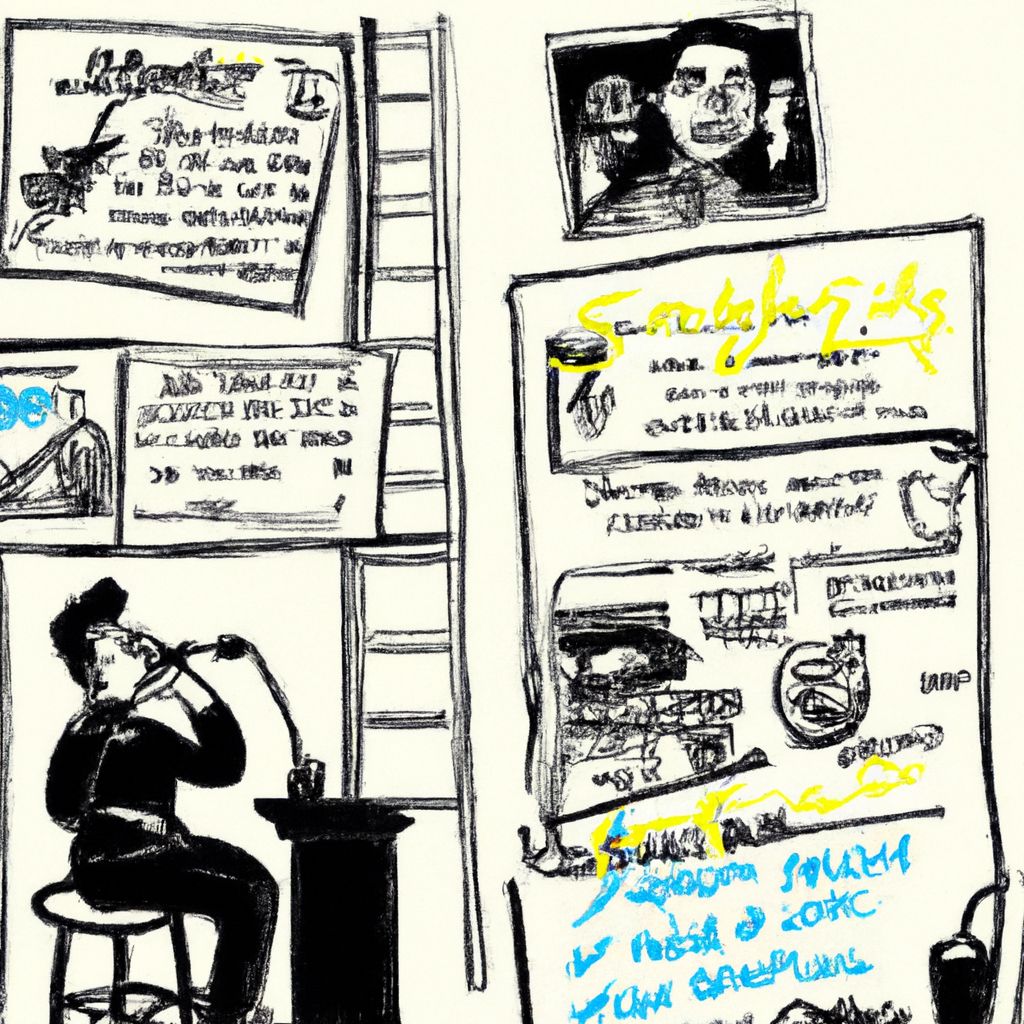
The writing process for standup comedy is both an art and a science, requiring creativity, discipline, and a deep understanding of comedic mechanics. Finding inspiration for material is a comedian's ongoing quest, and it often involves keen observation of the world, an ear for dialogue, and a knack for reflecting on personal experiences. Inspiration can come from the mundane to the extraordinary, and finding humor in life's challenges is a common thread among comedians.
Developing a comedic persona is a critical step in a comedian's writing process. This onstage alter-ego can be a heightened version of the comedian's own personality or an entirely different character. This persona serves as a lens through which the comedian views the world, and it can shape the style, tone, and perspective of the material. The persona should be consistent and authentic, allowing the audience to connect with and understand the comedian's point of view.
Creating a narrative arc within a set provides structure and cohesion, guiding the audience through a journey that builds to a satisfying conclusion. A well-crafted set might begin with quick, lighter jokes to warm up the audience, gradually moving into longer stories or thematic bits, and culminating in a closing joke that ties back to earlier material, leaving the audience with a sense of closure.
Writing comedy for different audiences is an exercise in versatility and adaptation. Comedians must be aware of their audience's sensibilities and tailor their content accordingly. For instance, a college crowd might appreciate edgier, topical humor, while a corporate event would require cleaner material that steers clear of controversy. Understanding the demographic and cultural context of the audience is essential for a comedian's material to land effectively.
The importance of tailoring content extends to the venue or event. Comedy clubs, theaters, and festivals each have their own atmosphere, and what works in one setting may not resonate in another. A large venue might call for broader, more physical humor, while an intimate club setting allows for subtler, more nuanced comedy. Additionally, the timing of a performance—such as a late-night set versus a daytime gig—can influence the type of material that will be most successful.
The writing process for standup comedy is a dynamic and ongoing endeavor. Comedians must continually refine their material, test it in front of audiences, and be willing to edit and adapt based on what works. It's this iterative process that sharpens a comedian's writing and ultimately leads to a polished, effective standup set.
Performing Standup Comedy
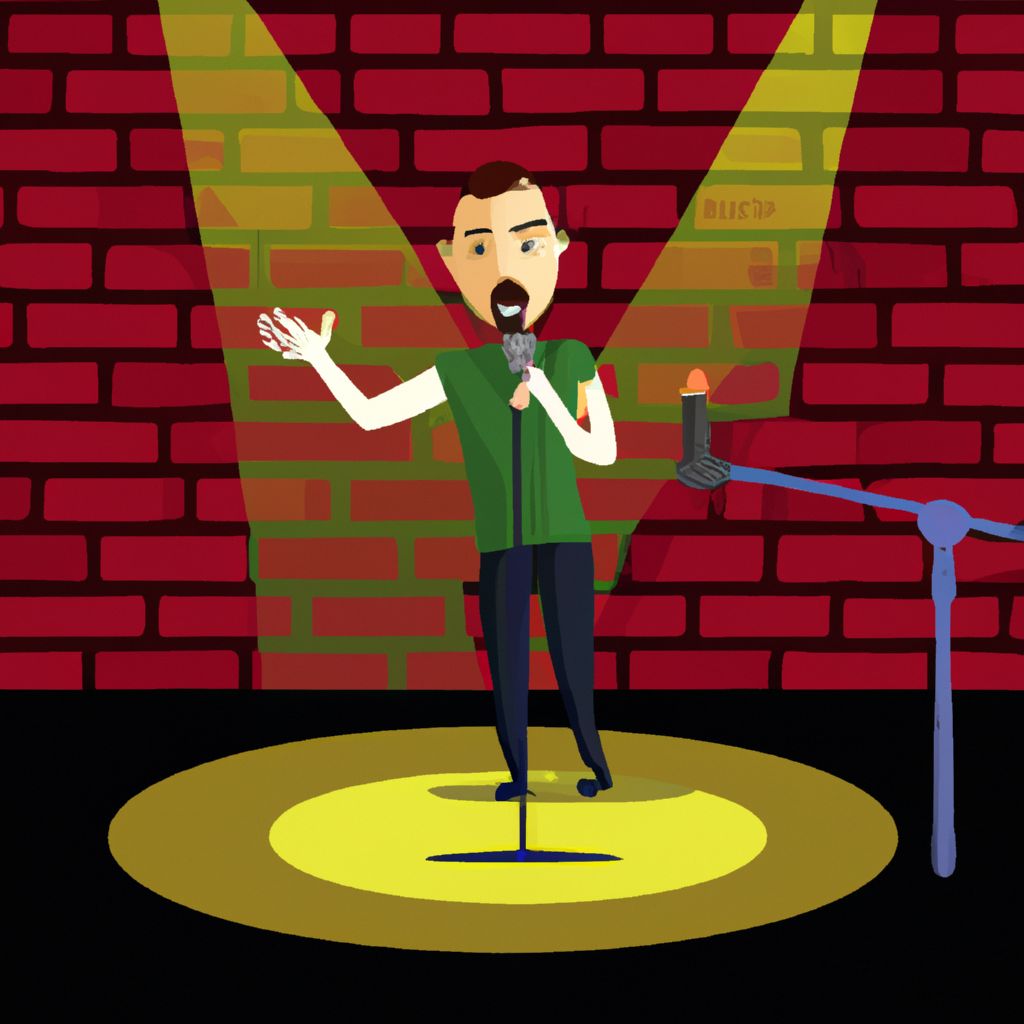
A successful standup performance is the culmination of several skills that go beyond the written material. A comedian must be adept not only at crafting jokes but also at delivering them effectively.
Stage presence is the performer's ability to command the attention of the audience from the moment they step on stage. A strong stage presence is characterized by confidence, charisma, and the capacity to project one's personality into the performance space. This intangible quality can make the difference between a performance that captivates an audience and one that fails to connect.
Voice modulation is another critical skill for standup comedians. The way a comedian uses their voice, varying tone, volume, and pace, can greatly enhance the impact of a joke. A well-timed whisper or a sudden shout can serve as an effective punchline or accentuate a comedic moment, while a monotonous delivery may cause the material to fall flat.
Body language is equally important. Gestures, facial expressions, and movement can illustrate a story or joke, providing visual cues that complement the verbal content. Physicality in comedy can be a powerful tool, as seen in the performances of comedians like Jim Carrey, whose expressive movements are a hallmark of his comedy.
Rehearsal plays a pivotal role in preparing for a standup performance. It allows comedians to work on their timing, refine their delivery, and commit their material to memory. Rehearsals also provide an opportunity to experiment with different inflections and gestures to see what enhances the humor.
Testing material in smaller venues before progressing to larger stages is a tried and true method for honing a standup act. Smaller venues offer a low-stakes environment where comedians can gauge audience reactions, make adjustments, and develop their confidence. This iterative process of performance, feedback, and refinement is crucial for shaping a set that is ready for the spotlight of a larger stage.
The skills needed for a successful standup performance are multifaceted and interconnected. They require practice, self-awareness, and an understanding of the dynamics of live entertainment. By mastering these skills, a comedian can transform a set of jokes into a memorable and engaging standup performance.
Analyzing Great Standup Performances
Analyzing iconic standup comedy performances provides valuable insights into the craft and reveals the techniques that make them resonate with audiences. Memorable performances often share common threads that contribute to their success.
One such performance is George Carlin's "Seven Dirty Words" routine. This performance was not only hilarious but also groundbreaking for its commentary on free speech and censorship. Carlin's rhythmic delivery and incisive social commentary struck a chord with audiences. His ability to push boundaries while staying relatable made the performance legendary from both a comedic and cultural standpoint.
Another celebrated performance is Richard Pryor's "Live in Concert" (1979). Pryor's strength was in his storytelling, which was vivid, brutally honest, and often poignant. His portrayal of various characters and voices within a single narrative showcased his incredible range and ability to convey complex emotions, making the audience laugh one moment and reflect the next.
Chris Rock's "Bring the Pain" (1996) is a masterclass in observational comedy with a powerful edge. Rock's performance was successful due to his sharp social observations and his commanding stage presence. His use of repetition for emphasis and his direct engagement with the audience amplified the impact of his material.
Callbacks are a technique often used in standup to create a sense of structure and to elevate the humor. A callback refers to a joke that references an earlier part of the performance, creating an "inside joke" with the audience. Ellen DeGeneres used this technique effectively in her special "Here and Now" (2003), where she revisited earlier themes and jokes, tying her set together and bringing recurring laughter.
What truly makes these performances stand out is the comedians' deep understanding of their audience and their ability to engage them. Whether it's through relatable content, delivering punchlines with precision, or weaving a story that captivates the listener, success lies in the comedian's connection with the audience. The techniques employed are diverse, but they all serve the purpose of enhancing that connection, making the performance not just a presentation of jokes, but an experience shared between the comedian and their audience.
The Business of Standup Comedy
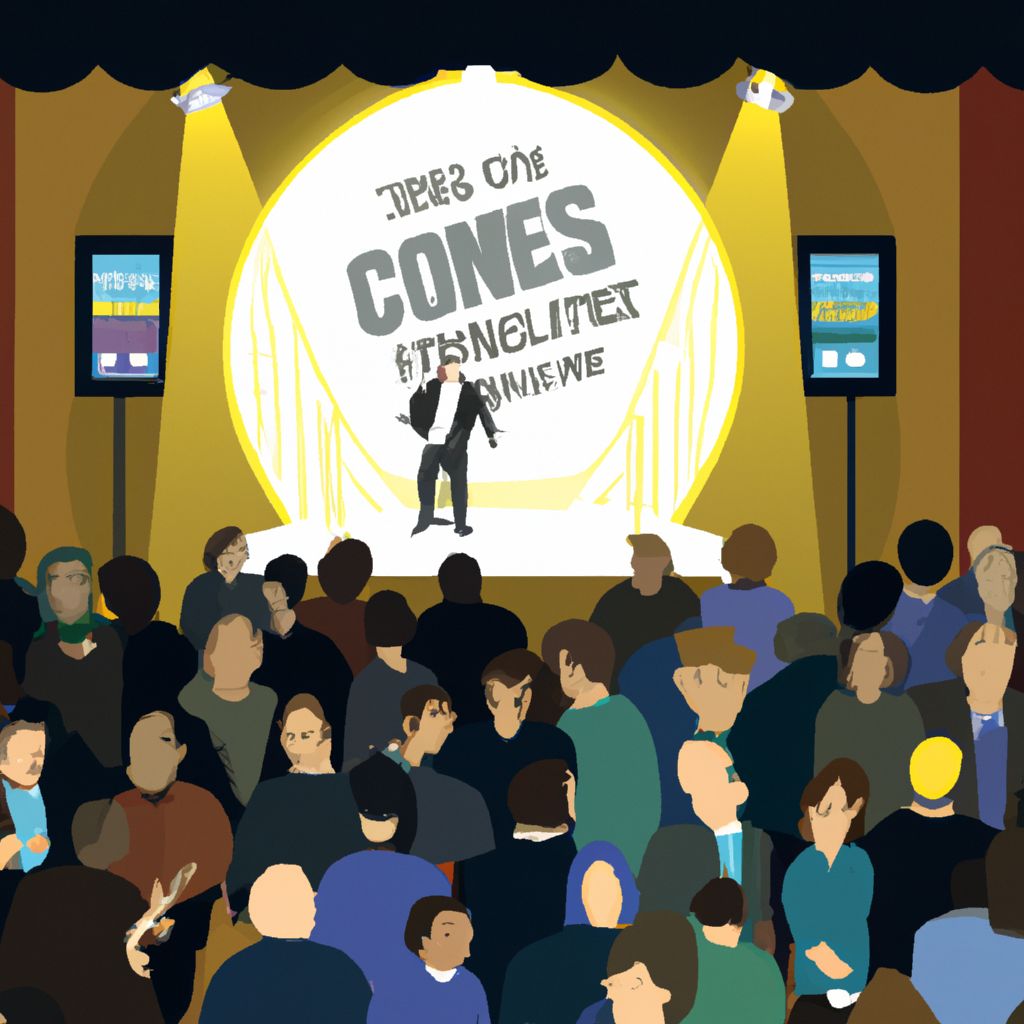
The business of standup comedy is multifaceted, with success often requiring savvy marketing and strategic career management in addition to comedic talent. Comedians today must navigate a complex landscape to build their brand and reach their audience.
Marketing oneself as a comedian involves establishing a distinct comedic voice and persona that resonates with audiences. Social media platforms like Twitter, Instagram, and TikTok have become indispensable tools for comedians to share their material, connect with fans, and build a following. Creating a strong online presence can lead to virality and open doors to new opportunities.
The role of agents and managers is crucial in the professional development of a comedian. Agents can secure bookings and negotiate contracts, while managers typically guide the comedian's career trajectory, helping with branding, media relations, and long-term strategic planning. These professionals act as liaisons between the comedian and the industry, advocating for their client's interests.
Various platforms serve as stages for standup comedy. Traditional comedy clubs remain a backbone of the industry, providing a testing ground for new material and a space for comedians to hone their craft. Comedy clubs also play a pivotal role in networking, where comedians can connect with peers and industry professionals.
Television specials have long been a mark of success for standup comedians. Airing on networks like HBO or Comedy Central, these specials can catapult a comedian to national recognition. However, the rise of online streaming services such as Netflix, Amazon Prime Video, and Hulu has transformed the landscape, offering comedians the potential to reach global audiences. These platforms have become a popular destination for standup specials, giving comedians unprecedented exposure and the freedom to produce content that might not fit traditional TV formats.
Moreover, the proliferation of podcasts and YouTube channels offers additional avenues for comedians to showcase their humor and expand their brand. These mediums can also serve as revenue streams through advertising, subscriptions, and merchandise sales.
Understanding the business of standup comedy is essential for comedians who aspire to turn their passion into a sustainable career. It's a combination of talent, strategic marketing, and industry partnerships that ultimately leads to success in the competitive world of standup comedy.
Navigating the Current Standup Comedy Scene

The current landscape of standup comedy is shaped significantly by the digital age, where social media and digital content creation play pivotal roles. The rise of platforms such as YouTube, TikTok, and Instagram has democratized the distribution of comedy, allowing comedians to reach wide audiences without the traditional gatekeepers of the industry.
The impact of social media on standup comedy is profound. Comedians can leverage these platforms to showcase their work, engage with followers, and create viral moments. Short-form content, like quick jokes or humorous skits, can attract attention and build an online persona that compliments a comedian's stage act. Additionally, social media analytics provide invaluable feedback and insights into audience preferences, enabling comedians to tailor their content to what resonates most.
For emerging comedians, building a following in this digital landscape requires a mix of consistency, authenticity, and engagement. Regularly posting content keeps a comedian's profile active and helps maintain audience interest. Authenticity is key; audiences are drawn to comedians who are true to themselves and their comedic voice. Engagement with followers, such as responding to comments and participating in trends, can foster a sense of community and loyalty among fans.
Adapting to the changing dynamics of comedy consumption means recognizing the importance of multi-platform visibility. While live performances are irreplaceable for the immediate feedback and connection they provide, having a digital presence is essential for growth. Comedians should consider diversifying their output—podcasts, blogs, and online sketches can complement live shows and help maintain visibility during times when onstage opportunities are limited.
The current standup scene also reflects a broader range of voices and perspectives, as diverse comedians gain prominence. This inclusivity is reflected in the material being produced and the audiences being reached. As such, comedians must be mindful of the shifting social landscape and the responsibilities that come with a public platform.
Ultimately, navigating the current standup comedy scene requires agility and a willingness to embrace new technologies and platforms. By combining traditional standup skills with digital savvy, comedians can carve out their niche in the comedy world and connect with audiences in a way that was not possible in previous generations.
Conclusion: The Continuous Evolution of Standup Comedy
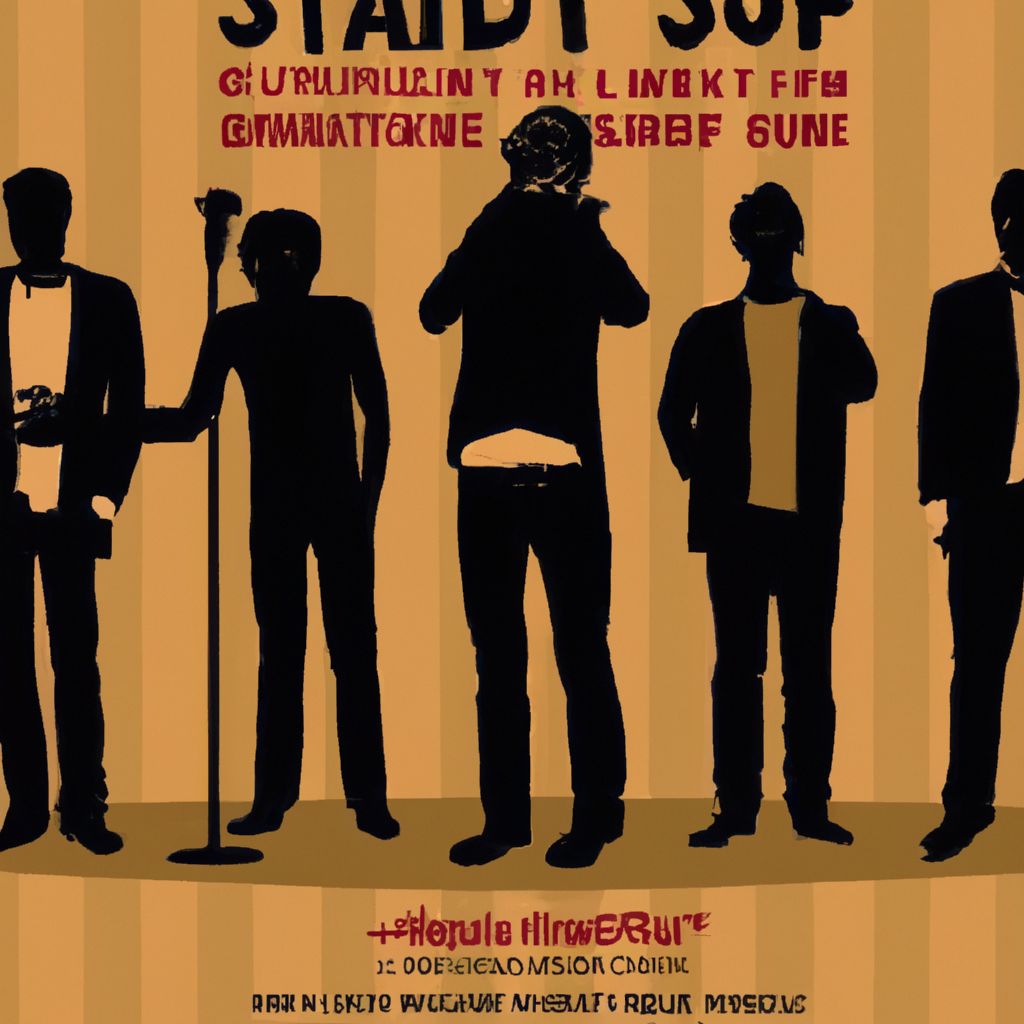
Standup comedy is an art form that has undergone significant transformation since its origins in vaudeville and music halls. The ability to draw laughter through storytelling, satire, and the sheer force of personality is a craft that has been refined by countless performers over the years. The key points discussed in this article emphasize the importance of understanding the nuances of timing, delivery, and audience engagement—fundamentals that remain at the heart of standup, regardless of the changing landscape.
We have explored various styles of standup comedy, from observational to improvisational, each offering a unique canvas for expression. The success of comedians like George Carlin, Richard Pryor, and Chris Rock illustrates the power of a well-crafted persona and the magic of connecting with an audience on a deep level. The writing process, too, is integral to standup, demanding a blend of inspiration, structure, and an understanding of the audience. Moreover, the performance itself requires a balance of stage presence, voice modulation, and body language, all of which contribute to the overall impact of a set.
The current standup comedy scene is vibrant and constantly evolving, shaped by digital platforms and social media. This new era presents both challenges and opportunities for aspiring comedians. To thrive, one must be persistent, creative, and adaptable, willing to embrace change and leverage new mediums.
For those aspiring to master the art of standup comedy, it is an exciting time to be a part of this ever-evolving field. The journey to becoming a great comedian is filled with highs and lows, but it is persistence, passion, and the continual honing of one's craft that carve the path to success. Standup comedy, as an art form and as a business, will continue to evolve, but the laughter, the connection, and the human experience at its core will forever remain the same.



